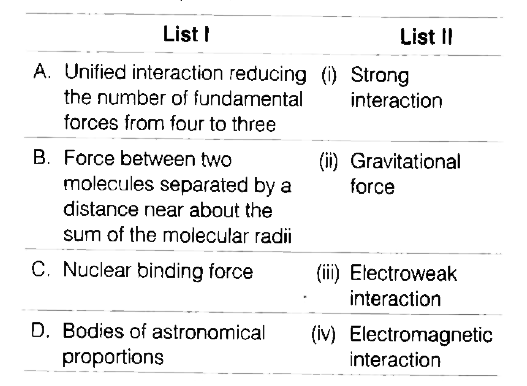A body travels in a straight line from point A to point B with an initial velocity zero and uniform acceleration, covering 1m during the first second and 39m during the last second. The distance between A and B in metre isSolution in Telugu
50
100
390
400
The correct Answer is:D
u= 0

Distance travelled in first 1s,
s1=1m=12at2
⇒ a = acceleration =2ms−2
Velocity after 1s, u+at,
=0+2×1=2ms−1
At the end of last second, let velocity is vms−1 Then, from
s=ut+12at2
we have, 39=v×1+12(2)×12⇒v=38ms−1
So, in unknown time duration of t seconds, velocity changes from 2ms−1 to 38ms−1 with an acceleration of 2ms−2
As a=vf−vit⇒=vf−via
or t=38−22=362=18s
Distance covered in these 18s is
s=ut+12at2
=2×18+12(2)×182
=36+324=360m
So, distance between points A and B,
=1+39+360=400m
Topper's Solved these Questions
Similar Questions
If A represents density, B represents velocity, C represents specific heat capacity and D represents wavelength, then the quantity having the dimensions of product of A, B, C and D is
View SolutionMatch the entries in List I with those in List II.

View SolutionIf body having initial velocity zero is moving with uniform acceleration 8m/sec2 the distance travelled by it in fifth second will be
View SolutionThe velocity time graph of a body moving in a straight line is as follows. Find the magnitude of displacement of body and distance travelled by body during first 6 seconds.
View SolutionA particle having initial velocity 4 m/s moves with a constant acceleration 1m//s^(2) for a time interval of 10 second in straight line. Find the displacement of the particle in the last second and the distance travelled in 10 second.
View SolutionA particle starts from rest and moves along a straight line with uniform acceleration. The ratio of distance travelled by the particle during the first three seconds to the distance travelled by the particle during the next three seconds is 3 о 2
View SolutionA particle starts from rest and moves along a straight line with uniform acceleration. The ratio of distance travelled by the particle during the first three seconds to the distance travelled by the particle during the next three seconds is 3 о 2
View SolutionA particle at rest starts moving in a horizontal straight line with a uniform acceleration. The ratio of the distances covered during the fourth and third seconds is
View SolutionA body moving along a straight line uniform acceleration 'a' covers a distance S_1 in the first t seconds and a distance S_2 in the next t second, a is then given by
View SolutionA particle at rest starts moving in a horizontal straight line with uniform acceleration The ratio of the distance covered during the fourth and the third second is
View SolutionA car starts from rest and accelerates at a constant rate in a straight line. In the first second, the car covers a distance of 2.0 meters. How much additional distance will the car cover during the second second of its motion ?
View SolutionA particle starting from initial velocity v_0 moves on straight line with constant acceleration equation of distance travelled during n^"th" second will be …... .
View SolutionA particle moving along a straight line with initial velocity u and acceleration a continues its motion for n seconds. What is the distance covered by it in the last nth second ?
View SolutionA ball rolling up an incline covers 36 metres during first second, 32 metres during second, 28 metres during next and so on. How much distance will it cover during the 9th second ?
View SolutionA particle having initial velocity 4 m/s moves with a constant acceleration 1m//s^(2) for a time interval of 10 second in straight line. Find the displacement of the particle in the last second and the distance travelled in 10 second.
View Solution
